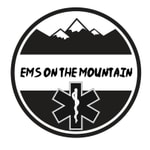The FlightBridgeED Podcast – Details, episodes & analysis
Podcast details
Technical and general information from the podcast's RSS feed.

The FlightBridgeED Podcast
Long Pause Media | FlightBridgeED
Frequency: 1 episode/16d. Total Eps: 288

Recent rankings
Latest chart positions across Apple Podcasts and Spotify rankings.
Apple Podcasts
🇨🇦 Canada - medicine
03/08/2025#56🇺🇸 USA - medicine
03/08/2025#92🇨🇦 Canada - medicine
02/08/2025#78🇺🇸 USA - medicine
02/08/2025#80🇨🇦 Canada - medicine
01/08/2025#80🇺🇸 USA - medicine
01/08/2025#79🇺🇸 USA - medicine
31/07/2025#91🇺🇸 USA - medicine
30/07/2025#78🇺🇸 USA - medicine
29/07/2025#75🇨🇦 Canada - medicine
28/07/2025#69
Spotify
No recent rankings available
Shared links between episodes and podcasts
Links found in episode descriptions and other podcasts that share them.
See all- https://FlightBridgeED.com
267 shares
RSS feed quality and score
Technical evaluation of the podcast's RSS feed quality and structure.
See allScore global : 58%
Publication history
Monthly episode publishing history over the past years.
CRASH & BURN: Airway Management in Hemodynamically Unstable Patients - Part 1
Episode 263
jeudi 12 septembre 2024 • Duration 49:13
In this thought-provoking episode of the FlightBridgeED Podcast: MDCAST, Dr. Mike Lauria is joined by Dr. Jeff Jarvis and Dr. Chris Stevens to tackle the critical and potentially controversial topic of airway management in hemodynamically unstable patients. The discussion dives into complex scenarios, decision-making challenges, and balancing the benefits of sedation with the risks of compromising a patient’s stability. From discussing medication-assisted intubation to exploring the concept of "crash airway" situations, the episode challenges conventional wisdom and encourages providers to think critically about their approach to airway management. This episode not only raises important questions but also provides valuable insights for both new and seasoned practitioners.
Some Takeaways to Listen For in this Episode:
- Balance Between Sedation and Hemodynamic Stability: It is important to understand how sedative agents like ketamine and etomidate affect blood pressure in critically ill patients. Over-sedation, especially in hemodynamically unstable patients, can lead to adverse outcomes. A nuanced approach to dosing is necessary.
- Awareness During Intubation: Awareness under paralysis can increase the risk of PTSD and depression. The conversation highlights the importance of avoiding awareness during airway management, especially using longer-lasting paralytics like rocuronium.
- Resuscitate Before Intubate: Emphasizes the need to stabilize patients, particularly their hemodynamics, before intubation. This can prevent worsening outcomes and cardiac arrest during emergency airway procedures.
- Decision-Making in Airway Management: Highlights that airway decisions are not black and white. Situational awareness, clinical judgment, and crew confidence are crucial, especially in determining whether to intubate pre-hospital or manage the airway in transit.
- Use of Supraglottic Airways: In emergencies where intubation is difficult or risky, supraglottic airways are recommended as a temporary measure to ensure oxygenation and ventilation until more definitive care is available.
PHACTORS: Impacting the "Platinum 10" Post-Intubation
Episode 262
mardi 20 août 2024 • Duration 01:27:20
In this engaging and insightful episode of the FlightBridgeED Podcast, Eric Bauer is joined by Dr. Michael Lauria as they delve into the intricacies of post-intubation care and the critical factors that impact patient outcomes during the first 10 minutes after intubation. Building on the well-established concepts of airway management and resuscitation, the discussion introduces the new acronym PHACTORS, which stands for Positive Pressure, Hypoxia, Acidemia, Cardiac Output, Transfer, Ongoing Pharmacology, Resuscitation, and Suction. Eric and Dr. Lauria explore how these elements play a pivotal role in the success or failure of post-intubation management, emphasizing the importance of maintaining vigilance during this critical phase. With practical tips, evidence-based insights, and real-world examples, this episode is a must-listen for anyone involved in pre-hospital critical care.
KEY TAKEAWAYS:
- Prioritize Post-Intubation Monitoring: The first 10 minutes after intubation are critical. Continuously monitor for hypotension and hypoxia, even if the initial intubation appears successful.
- Transition to Ventilator Early: Whenever possible, transition intubated patients from BVM to a mechanical ventilator as soon as possible to ensure consistent and controlled ventilation, which reduces the risk of over- or under-ventilation.
- Use Head-Elevated Positioning: Intubate patients in a head-elevated position (30 degrees) whenever possible to maintain functional residual capacity and reduce the risk of derecruitment and hypoxia.
- Suction Regularly: Proactively suction the ET tube and oral cavity to maintain airway patency. This helps prevent complications like ventilator-associated pneumonia and ensures optimal oxygenation.
- Be Ready with Push-Dose Pressors: Have push-dose pressors ready during and after intubation, especially in trauma patients or those with borderline hemodynamics, to quickly address any sudden drops in blood pressure.
- Assess and Manage Acidosis Individually: Not all acidosis requires aggressive ventilation. Consider the patient's overall condition, and tailor your ventilation strategy based on the specific type and cause of acidosis.
- Regular Sedation and Analgesia Dosing: Avoid under-sedation, particularly with long-acting paralytics like rocuronium. Set regular intervals for administering sedation and analgesia to ensure patient comfort and avoid awareness of paralysis.
- Proactively Manage Cardiac Output: In patients with compromised cardiac function, focus on optimizing preload, afterload, and contractility. Use fluids, inotropes, and vasopressors as needed to maintain stable hemodynamics.
- Secure and Streamline Lines for Transport: Before transferring a patient, ensure all lines are secured and organized to prevent dislodgement or kinking during movement. Keep access points readily available for quick medication administration.
- Understand the Impact of Positive Pressure: Transitioning from spontaneous breathing to mechanical ventilation can significantly impact venous return and cardiac output. Be prepared to manage these changes, especially in hemodynamically unstable patients.
Show Notes...
- A human, even when paying attention can deliver injurious tidal volume breaths that may go in "easy" but are probably injuring the lungs (Dafilou B, Schwester D, Ruhl N, Marques-Baptista A. It's in the bag: tidal volumes in adult and pediatric bag valve masks. West J Emerg Med. 2020;21(3):722–2021.)
- Not only are the volumes too big, but we likely WAY over breath for patients and that can be really, really bad especially after cardiac arrest or in TBI (common reasons patients get intubated...right?) (Dumont TM, Visioni AJ, Rughani AI, Tranmer BI, Crookes B. prehospital ventilation in severe traumatic brain injury increases in-hospital mortality. J Neurotrauma. 2010;27(7):1233–41.)
- More issues with BVM ventilation that shows it's not consistent
- Siegler J, Kroll M, Wojcik S, Moy HP. Can EMS providers provide appropriate tidal volumes in a simulated adult-sized patient with a pediatric-sized bag-valve-mask? Prehosp Emerg Care. 2017;21(1):74–8.
- Turki M, Young MP, Wagers SS, Bates JH. Peak pressures during manual ventilation. Respir Care. 2005;50(3):340–4.
- Kroll M, Das J, Siegler J. Can altering grip technique and bag size optimize volume delivered with bag-valve-mask by emergency medical service providers? Prehosp Emerg Care. 2019;23(2):210–4.
- Mechanical ventilation provides more consistency and automation of a simple task with monitoring parameters (alarms) that can make it safe and effective for paramedics to actually put their brain energy to important clinical decisions and complete other tasks (Weiss SJ, Ernst AA, Jones R, Ong M, Filbrun T, Augustin C, Barnum M, Nick TG. Automatic transport ventilator versus bag valve in the EMS setting: a prospective, randomized trial. South Med J. 2005;98(10):970–6.)
- Starting mechanical ventilation and safe ventilator settings in the prehospital setting seems to make ED providers more likley to put in the right settings and continue appropriate lung protective ventilation...at least in ARDS (Stephens RJ, Siegler JE, Fuller BM. Mechanical ventilation in the prehospital and emergency department environment. Respir Care. 2019;64 (5):595–603.)
- Here's a really solid position paper from NAEMSP on it that kind of summarizes everything including the specific clinical times when it may be more helpful like cardiac arrest, trauma, etc (Baez, A. A., Qasim, Z., Wilcox, S., Weir, W. B., Loeffler, P., Golden, B. M., … Levy, M. (2022). Prehospital Mechanical Ventilation: An NAEMSP Position Statement and Resource Document. Prehospital Emergency Care, 26(sup1), 88–95. https://doi.org/10.1080/10903127.2021.1994676)
FAST Archives: Equity in Emergency Care: What Does That Even Mean?
Episode 253
mardi 7 mai 2024 • Duration 15:09
In this episode of The FAST Archives, Ritu Sahni explores the essential topic of equity in emergency care. With a background that includes EMS Medical Director roles, emergency medicine, and air ambulance experience, Ritu provides a comprehensive look at what it means to care for entire communities.
In his talk, "Equity in Emergency Care: What Does That Even Mean?", Ritu unpacks the challenges of delivering equitable care in EMS and what it takes to make sure every individual gets the support they need. His insights, drawn from years of experience and his passion for public health, offer valuable guidance for EMS professionals committed to serving their communities.
Tune in to gain a deeper understanding of how we can achieve equity in emergency care and why it's so crucial in our roles as public health providers.
E163: FAST19 Rewind - "Breaking the Lethal Culture of Mental Health"
Episode 163
lundi 8 juillet 2019 • Duration 24:25
WOW! FAST19 was so amazing. So inspiring! If you missed FAST19.. Don't worry, FAST20 will be - May 18-20, 2020 in Murfreesboro, TN. This is the second of a few releases from FAST19. This was a moving talk by our own Daniel Mills from the 911 BuddyCheck Project. You don't want to miss this! Remember that reviews are key to helping keep us high on the charts where your friends and family can find us. We couldn’t make this podcast without you. Thanks for listening!
E162: Critical Care Round Table - Listener Q|A Answered
Episode 162
mardi 11 juin 2019 • Duration 40:05
In this episode, we dive into the many emails I receive and attempt to answer hot-topic clinical questions. Join me in this dynamic episode as we discuss all things critical care. Remember that reviews are key to helping keep us high on the charts where your friends and family can find us. We couldn’t make this podcast without you. Thanks for listening!
E161: The Nightmare Series Patient: Undifferentiated Overdose
Episode 161
lundi 3 juin 2019 • Duration 39:14
In this episode, we dive into another Nightmare Series Patient Case of the Undifferentiated Overdose. Join Ashley, Mike, and Eric during our recent visit to the National Teaching Institute Critical Care Nursing Conference. Remember that reviews are key to helping keep us high on the charts where your friends and family can find us. We couldn’t make this podcast without you. Thanks for listening!
E160: The EMS Lighthouse Project - Making Sense Of Epi in Cardiac Arrest
Episode 160
samedi 18 mai 2019 • Duration 01:36:18
This is a plug and introduction to all the FBE listeners to our newest podcast. The EMS Lighthouse Project Podcast exists to foster knowledge translation from peer-reviewed scientific journals to the street. Join Mike Verkest and Dr. Jeff Jarvis as they shine the bright light of science on EMS practice in an informative and fun way as they look deep into the research on epi in cardiac arrest. Does it help? Are there better outcomes? How do patients do based on neurological outcomes? Remember that reviews are key to helping keep us high on the charts where your friends and family can find us. We couldn’t make this podcast without you. Thanks for listening!
E159: FAST19 Rewind - RVAD vs. Air Embolus | A Lesson in CRM w/ Bruce Hoffman
Episode 159
dimanche 12 mai 2019 • Duration 22:04
WOW! FAST19 was so amazing. So inspiring! If you missed FAST19.. Don't worry, FAST20 will be - May 18-20, 2020 in Murfreesboro, TN. This is the first of a few releases from FAST19. This was a very popular talk by our own Bruce Hoffman as he perfectly goes through the case-based study called - RVAD vs. Air Embolus | A Lesson in CRM. Remember that reviews are key to helping keep us high on the charts where your friends and family can find us. We couldn’t make this podcast without you. Thanks for listening!
E158: FAST18 Rewind - "When Things Get Wicked"! w/ Ginger Locke
Episode 158
samedi 4 mai 2019 • Duration 20:25
FAST18 was Epic! If you missed FAST18... Don't worry, FAST19 is in three days - May 6-8, 2019 in Murfreesboro, TN. This is the fifth and final release of FAST18. Join the 2019 Keynote opening speaker, Ginger Locke for this thought-provoking talk - "When Things Get Wicked"! Remember that reviews are key to helping keep us high on the charts where your friends and family can find us. We couldn’t make this podcast without you. Thanks for listening!
E157: The Nightmare Series - Cardiac Catastrophe
Episode 157
lundi 29 avril 2019 • Duration 20:21
We are back to the horrors associated with "The Nightmare Patient". The crew is tenuously attempting to rip the patient out of death’s mouth and bring him back from the roaring mouth of oblivion. Will the patient be saved? In this episode, we dive into the cardiac catastrophe. Take a journey as we discuss treatment pearls associated with atypical presentations, with a focus on Wellen's syndrome and papillary muscle rupture of the mitral valve and associated treatment PEARLS. Join me on the tough topic and take a journey with me as we explore our thinking methodology. Remember that reviews are key to helping keep us high on the charts where your friends and family can find us. We couldn’t make this podcast without you. Thanks for listening!



